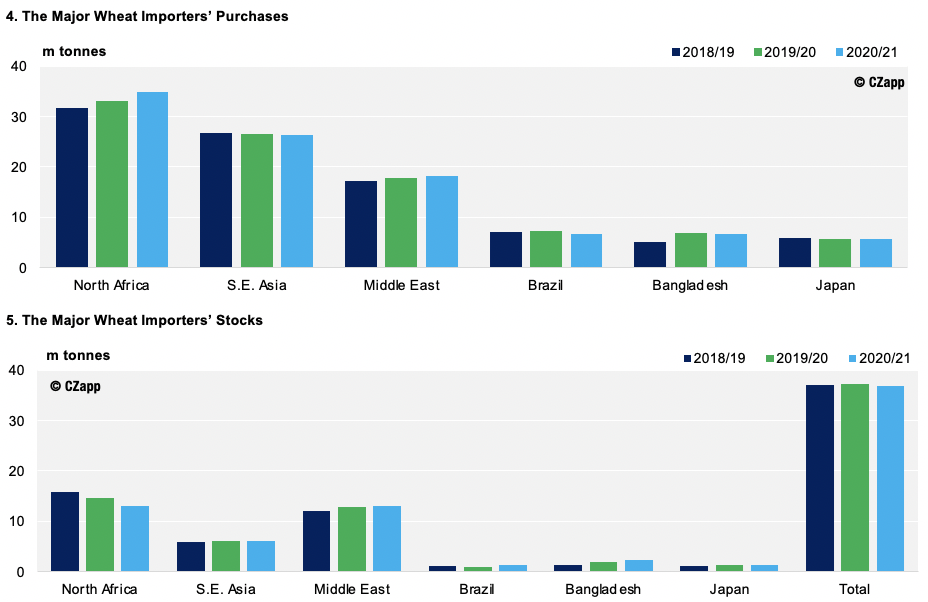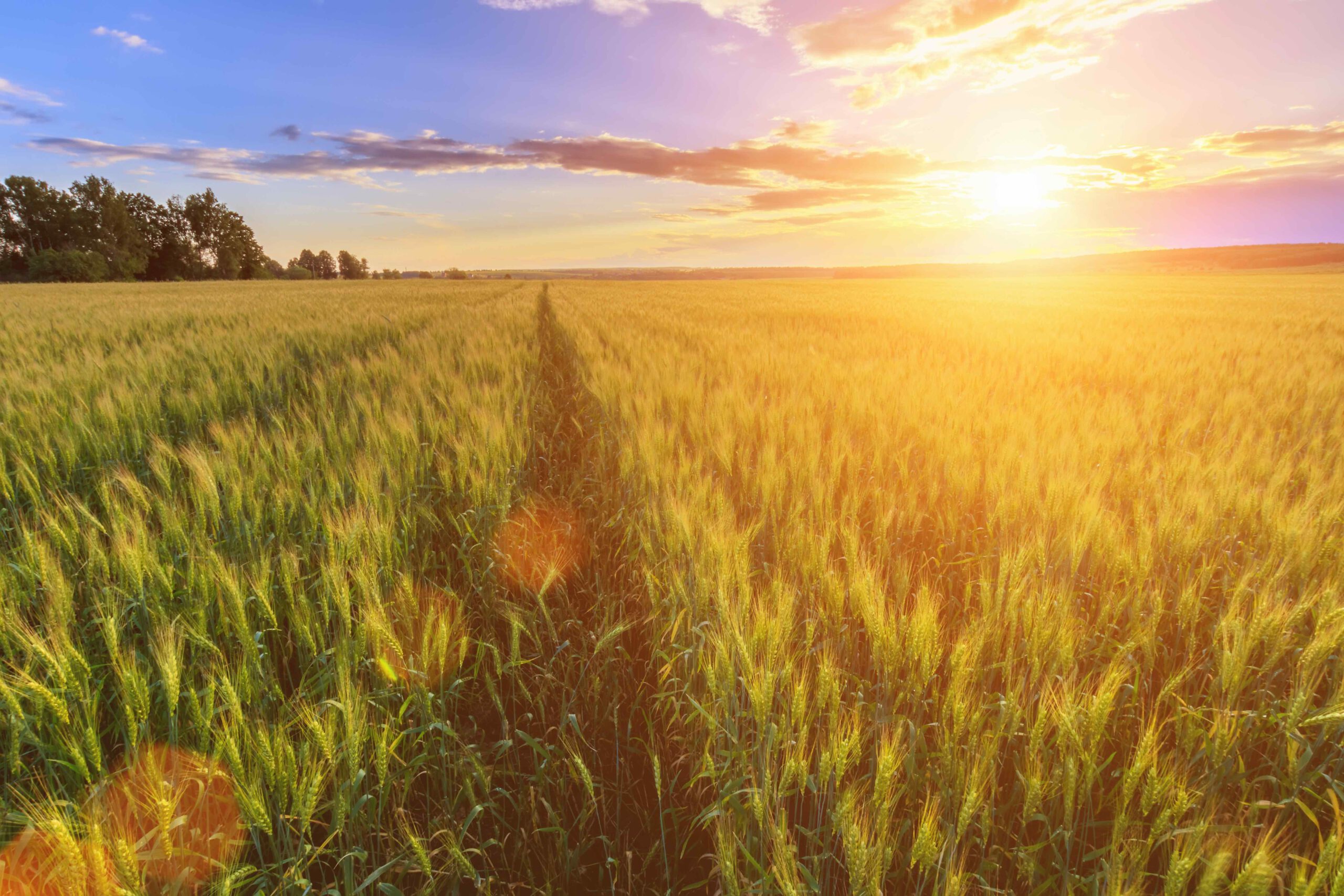Note: All the data behind this Opinion’s charts comes from the USDA’s November WASDE.
- In our last article, we looked at the record global wheat stocks, coupled with the price rise seen in recent months.
- We discussed why these have unexpectedly risen in tandem.
- Here, we consider the longer-term trends, and the way countries view their wheat stocks in light of this extraordinary year with COVID-19 at the forefront?
Some Recent History
- Let’s start by taking a quick look at the 2020/21 production estimates and compare these to the 2018/19 and 2019/20 estimates.

- Chart 1 shows that global wheat production has been on the rise and stocks have increased.

- Charts 2 and 3 reveal how the major exporters have produced more wheat.
- However, the vagaries in weather have led to significant variations in harvest sizes, most notably in the EU, Russia and Australia over the last three years.
- Interestingly, the exporters’ overall stock levels have decreased.

- Charts 4 and 5 indicate a small increase in the main importers’ purchases, but importantly show similar-sized reserves.

- Chart 6 demonstrates the will of the world’s two most populous countries to increase stockpiles to feed their huge nations.
Food Security and Politics
As we see in China and India, a desire for food security is unsurprisingly high on any Government’s agenda, especially if you have enormous numbers to feed.
In the early 2010s, we saw the ‘Arab Spring’, which began in Tunisia and spread across North Africa, resulting in huge political turmoil as Governments were overthrown. Living standards and food security were significant catalysts in sparking these uprisings.
Egypt, as the world’s largest wheat importer, has over recent months, expressed concerns for sufficient and stable internal wheat stocks. These comments have been made as much in respect to the potential logistical issues caused by coronavirus lockdowns and shipping delays as anything else.
The basic food needs of your countrymen are paramount in striving for political stability and sustainability for those in Government. The more difficult problem, in an economically unstable world, is how you pay for greater national wheat reserves.
Thoughts for the Future
The major producers and exporters will continue to grow large amounts of wheat, as farmers strive for economic gain. Uncertain weather and long-term climate changes present obstacles to achieving this.
China and maybe a few others have the desire, funds and political structure to allow major wheat reserves to be held. Perhaps not all, such as those in North Africa, are afforded that luxury, despite having the desire.
Global wheat stocks are currently at record levels and as we have commented before, the world is regularly said to be awash with wheat.
Weather difficulties, COVID-type diseases, logistics, and the associated economic impacts will all play a part in, not necessarily the desire, but most definitely the ability for changes in the way trade is done.

Other Opinions You Might Be Interested In…
- Czapp Explains: Global Wheat Futures
- The World’s Largest Wheat Users and Importers
- The World’s Largest Wheat Producers and Exporters
Interactive Data You Might Be Interested In…














